Submitted by chandra on Wed, 2013-07-03 16:39
Note: An earlier version of this article appeared on this blog by Peter Edmonds.
Last week at the Chandra X-ray Center we celebrated July 4th a week early with this new image of cosmic fireworks. This is G1.9+0.3, the youngest remains - as seen from Earth - of any supernova in our galaxy. If gas and dust had not heavily obscured it, the supernova would have been visible from Earth just over a century ago.
Submitted by chandra on Wed, 2013-06-26 10:24
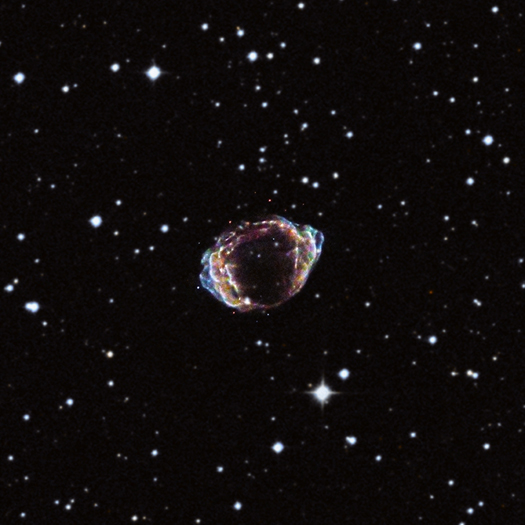
Astronomers estimate that a star explodes as a supernova in our Galaxy, on average, about twice per century. In 2008, a team of scientists announced they discovered the remains of a supernova that is the most recent, in Earth's time frame, known to have occurred in the Milky Way.
Submitted by chandra on Wed, 2013-04-17 12:49
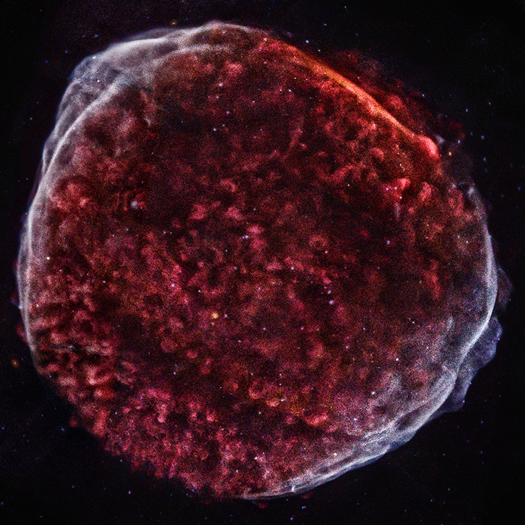
This year, astronomers around the world have been celebrating the 50th anniversary of X-ray astronomy. Few objects better illustrate the progress of the field in the past half-century than the supernova remnant known as SN 1006.
Submitted by chandra on Tue, 2013-03-19 11:47
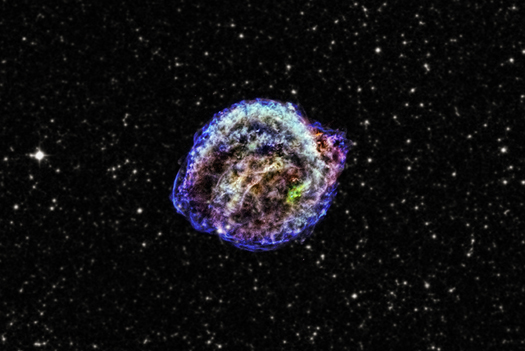
This is the remnant of Kepler's supernova, the famous explosion that was discovered by Johannes Kepler in 1604. The red, green and blue colors show low, intermediate and high energy X-rays observed with NASA's Chandra X-ray Observatory, and the star field is from the Digitized Sky Survey.
As reported in our press release, a new study has used Chandra to identify what triggered this explosion. It had already been shown that the type of explosion was a so-called Type Ia supernova, the thermonuclear explosion of a white dwarf star. These supernovas are important cosmic distance markers for tracking the accelerated expansion of the Universe.
Submitted by chandra on Sun, 2013-03-17 21:09
We are delighted to welcome Mary Burkey as a guest blogger today. Mary is first author of a paper, describing the trigger mechanism for the Kepler supernova, that is the subject of our latest press release. She grew up in Raleigh, North Carolina and is in her last semester at North Carolina State University. When she graduates in May, she will have Bachelors degrees in Physics, Chemistry, and Applied Mathematics. After commencement, Mary will attend one of the graduate schools she is currently exploring and plans to obtain a PhD in Physics.
When people all over the world looked up into the night sky 409 years ago and saw a new star, they immediately began studying it. However, no one studied this new celestial object more closely than Johannes Kepler. Over several years, he synthesized his observations into a historical book, De Stella Nova, which later justified naming the star “Kepler’s supernova.”
Submitted by chandra on Fri, 2013-03-15 11:24
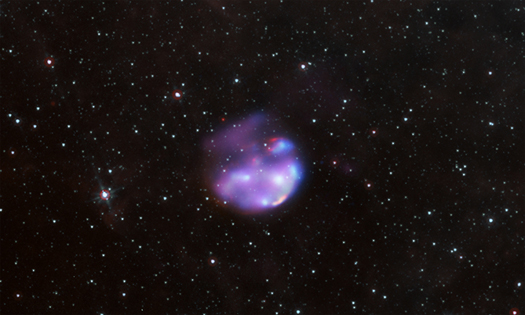
While performing an extensive X-ray survey of our galaxy's central regions, NASA's Swift satellite has uncovered the previously unknown remains of a shattered star. Designated G306.3-0.9 after the coordinates of its sky position, the new object ranks among the youngest-known supernova remnants in our Milky Way galaxy.
Submitted by chandra on Wed, 2013-02-13 11:01
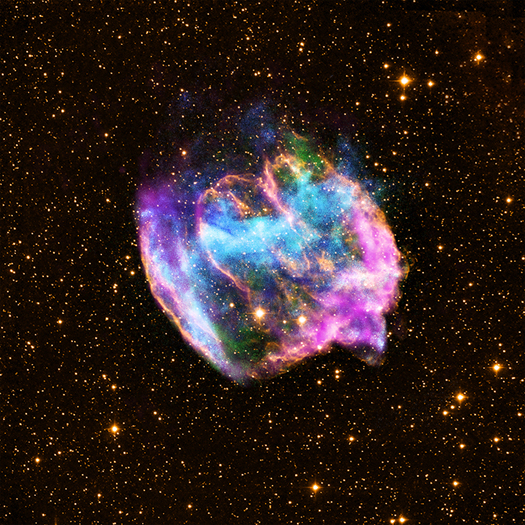
The highly distorted supernova remnant shown in this image may contain the most recent black hole formed in the Milky Way galaxy. The image combines X-rays from NASA's Chandra X-ray Observatory in blue and green, radio data from the NSF's Very Large Array in pink, and infrared data from Caltech's Palomar Observatory in yellow.
The remnant, called W49B, is about a thousand years old, as seen from Earth, and is at a distance of about 26,000 light years away.
Submitted by chandra on Tue, 2013-02-12 21:50
We are delighted to welcome Laura Lopez as a guest blogger today. Laura is first author of a paper describing the rare explosion that may have created the youngest known black hole in our Galaxy. Laura Lopez is currently a NASA Einstein Fellow and Pappalardo Fellow in Physics at MIT. Laura received her PhD in astronomy & astrophysics from the University of California Santa Cruz in 2011. Before her time at UCSC, she earned her bachelors degree in physics from MIT in 2004. Laura is originally from Barrington, IL, a northwest suburb of Chicago. Her research focuses on probing the beginning and ending of the stellar life cycle: how stars are born and how stars end their lives through supernova explosions.
A few years ago when I was a bright-eyed PhD student, I stumbled upon a press release making a provocative argument: a thousand year old supernova remnant in our Galaxy called W49B may have formed from a gamma-ray burst. Gamma-ray bursts (GRBs) are extreme supernova explosions thought to mark the end of the lives of some very massive stars, and they are the most energetic and luminous events in the Universe. Although astronomers have now found several hundred gamma-ray bursts, these explosions tend to be billions of light years away. So the claim that one may have occurred in our own Galaxy seemed astounding. It got me thinking: what would a gamma-ray burst look like after a thousand years, and what would it leave behind?
Submitted by chandra on Tue, 2012-09-11 12:09
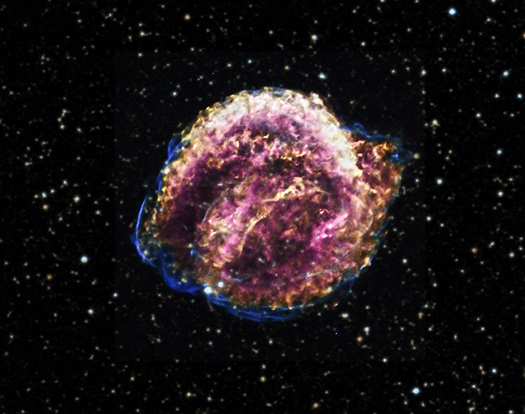
In 1604, a new star appeared in the night sky that was much brighter than Jupiter and dimmed over several weeks. This event was witnessed by sky watchers including the famous astronomer Johannes Kepler. Centuries later, the debris from this exploded star is known as the Kepler supernova remnant.
Astronomers have long studied the Kepler supernova remnant and tried to determine exactly what happened when the star exploded to create it. New analysis of a long observation from NASA's Chandra X-ray Observatory is providing more clues. This analysis suggests that the supernova explosion was not only more powerful, but might have also occurred at a greater distance, than previously thought.
Submitted by chandra on Tue, 2012-05-15 10:15

Observations with NASA's Chandra X-ray Observatory have provided the first X-ray evidence of a supernova shock wave breaking through a cocoon of gas surrounding the star that exploded. This discovery may help astronomers understand why some supernovas are much more powerful than others.
Pages